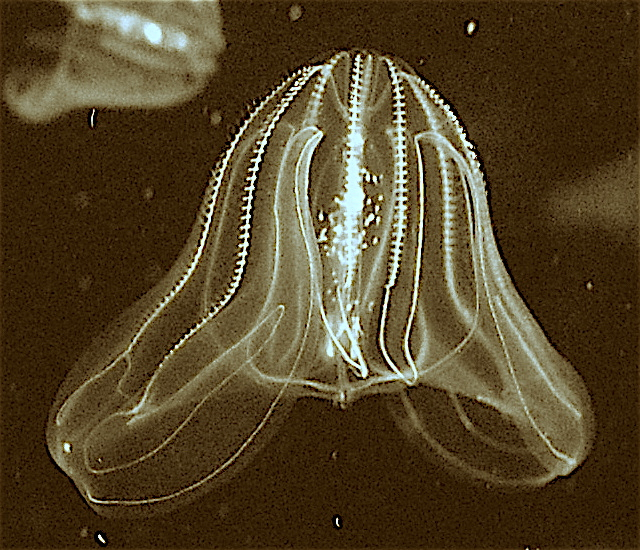As Morski writes, known as the “sea walnut”, this strange primitive invasive organism originates from the northeastern coast of the United States and the Gulf of Mexico, according to a report from Dnevnik.hr.
Mnemiopsis leidyi, or sea walnuts, can cause significant damage to the fishing industry, drastically reducing the stock of small blue fish such as sardines and anchovies which are always popular. Although they are harmless to human swimmers, their presence potentially threatens tourism as the high density of gelatinous organisms is far from pleasant.
”If there is a significant warming up of the sea at the end of spring and the beginning of summer, a mass appearance of sea walnuts along the coast of western Istria can be expected,” said doc. dr. sc. Paolo Paliaga from the Faculty of Natural Sciences in Pula.
Italian, Slovenian and Croatian scientists are cooperating intensively in the research of cone jellies such as the so-called sea walnuts, and the importance of the problem at the local level has been recognised by the cities of Rovinj, Porec and Novigrad-Cittanova, all of which are located along Northern Croatian coast, and is being financially supported by some previous research.
A large number of cone jellies were first observed in Croatian waters back in July 2016 and since the summer of 2017 they regularly appear between May and November in the coastal belt of western Istria, the Gulf of Trieste and in Northern Croatian waters.
”Since Northern Croatian waters are the most productive areas of the Mediterranean in terms of fish stocks, creating a very important resource for the Croatian, Italian and Slovenian economies, it is extremely important to monitor the development of the situation and the impact of the invasion of these cone jellies,” warned Paliaga.
The most famous example of the impact of these bizarre organisms was recorded back in the 1980s in the Black sea where fishing collapsed, with damages estimated at hundreds of millions of dollars and where the system hasn’t fully recovered to date. Similar situations were recorded in the 1990s in the Sea of Azov and in the Caspian sea.
International studies have shown that these organisms feed on zooplankton, fish and shellfish larvae and that the have no natural enemies. An egg-shaped individual with an average length of seven centimetres is able to consume all of he living zooplankton in one litre of sea in just ten hours.
The reproductive potential of the species is extremely high since they are hermaphrodites that can fertilise themselves and release several thousand fertilised eggs every single day. In addition, these marine creatures have a great tolerance when it comes to temperature and salinity and are able to spend the colder months in Northern Croatian waters without much difficulty.
The population peaks in September when they’re ubiquitous in the Northern Croatian surface waters, and the number then decreases drastically from late December to April due to low temperatures and less food availability.
In addition to having a direct and deeply negative impact on fish stocks, the introduction of invasive cone jellies has contributed to a significant reduction in the biodiversity of exposed systems and disrupted their natural balance, scientists have warned.
They are now investigating other impacts of cone jellies on the marine ecosystem, including their release of organic matter into the sea and the impact on the abundance and structure of the microbial community that is fundamentally important for the marine environment.
The Centre for Marine Research in Rovinj of the Rudjer Boskovic Institute, the Faculty of Natural Sciences of the Juraj Dobrila University in Pula, the Institute of Oceanography and Fisheries in Split and the University of Dubrovnik are all participating in the studies.
Croatian experts are intensively cooperating with their Slovenian colleagues from the Marine Biological Station in Piran and Italian scientists from the National Institute of Oceanography and Experimental Geophysics in Trieste on the matter.
For the latest travel info, bookmark our main travel info article, which is updated daily.
Read the Croatian Travel Update in your language – now available in 24 languages.
Join the Total Croatia Travel INFO Viber community.










